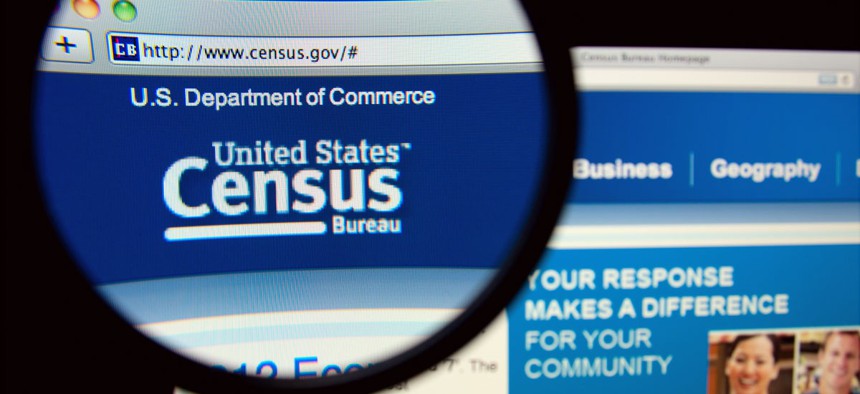The Plan for Avoiding 2020 Census Tech Flubs? Innovate But Don’t Invent

Gil C/Shutterstock.com
Census takers could be using commercially-available smartphones and tablets to administer the survey in 2020.
About five years from the 2020 survey, the Census Bureau is scrambling to trim as much as $5 billion off survey administration costs by using technology such as smartphones and tablets, officials said.
As the Commerce Department agency prepares to unveil plans in September for the re-engineered survey, leaders are trying to distance themselves from a botched attempt in 2010 to build their own handheld devices for survey-taking.
Scrapping those plans in 2008 and reverting back to pen-and-paper increased the cost of the 2010 Census by up to $3 billion, according to the Government Accountability Office. Census plans to have all systems and processes for the 2020 Census ready for testing by October 2018.
"We are innovating, but we are not inventing," Census Bureau Director John Thompson said during a Senate Homeland Security and Governmental Affairs Committee hearing Monday. "Our plan is to use existing technology and existing expertise and innovate by using that intelligently."
In other words, the agency will use existing smartphones and won't try to develop from scratch a proprietary handheld device like it attempted to do in 2010.
Current efforts include:
- Incentivizing citizens to take the Census survey online, on the phone or by mail, minimizing door-to-door visits from Census staff and potentially saving about $548 million, according to the Census;
- Working with the U.S. Postal Service and other federal agencies to share address lists and road data, and soliciting information from the private sector about technology that can detect changes in addresses in local areas, potentially saving up to $1 billion:
- Using smartphones and tablets instead of paper and pencil to manage field operations, including the geographical route Census takers use to reach citizens, could save up to $2.3 billion;
- Sharing demographic data between agencies, reducing the need to follow-up with households that do not respond to the survey, could save $1.2 billion, according to Census calculations.
The survey has cost the Commerce Department more each decade, according to GAO. The 2010 Census totaled about $13 billion, and at that rate, the 2020 Census could cost about $25 billion. The cost of administering the survey, per housing unit, has grown from $16 in 1970 to around $94 in 2010, according to GAO.
GAO officials have been skeptical about the agency's re-engineering plan. During the hearing, GAO's director of information technology acquisition management issues, Carol Cha, said the project might be too complex to complete in the proposed time frame given the bureau's current workforce.
In October 2014, Census launched an ambitious IT initiative, the Census Enterprise Data Collection and Processing program to handle survey data collection and processing. In an April 2014 report, GAO concluded it was unlikely IT-related research and testing would be completed in time for the September deadline for presenting a plan.
A February 2015 report GAO also found the agency had competency gaps in cloud computing, security integration and engineering and Internet data collection, among other skill sets. There is limited assurance the agency's systems are completely secured, according to GAO testimony.
“A data breach could result in the public’s loss of confidence in the bureau, thus affecting its ability to collect census data," Cha and GAO Director of Strategic Issues Robert Goldenkoff said in prepared testimony.
GAO has made 115 recommendations for addressing information security deficiencies. So far, the Census has addressed only 19 of them, Cha said during the hearing.
There are external barriers to cost cutting, Thompson told lawmakers. For instance, the bureau is currently prohibited from accessing the National Directory of New Hires, managed by the Department of Health and Human Services. That database contains information on populations receiving unemployment benefits, for instance, and, in conjunction with tax records and other data sets could help the agency triangulate information about hard-to-reach populations, according to Thompson's testimony.
"We would need some legislative changes to have access to that," Thompson told Sen. James Lankford, R-Okla., during the hearing. He noted the bureau is in the process of acquiring records from the Supplemental Nutrition Assistance Program.
During the hearing, Thompson emphasized that much more testing must be completed in 2016 and 2017 to be able to run an end-to-end test in 2018.
"And that would give us the insurance that we can avoid a bad situation, similar to what happened before," he added.
(Image via Gil C/ Shutterstock.com)


